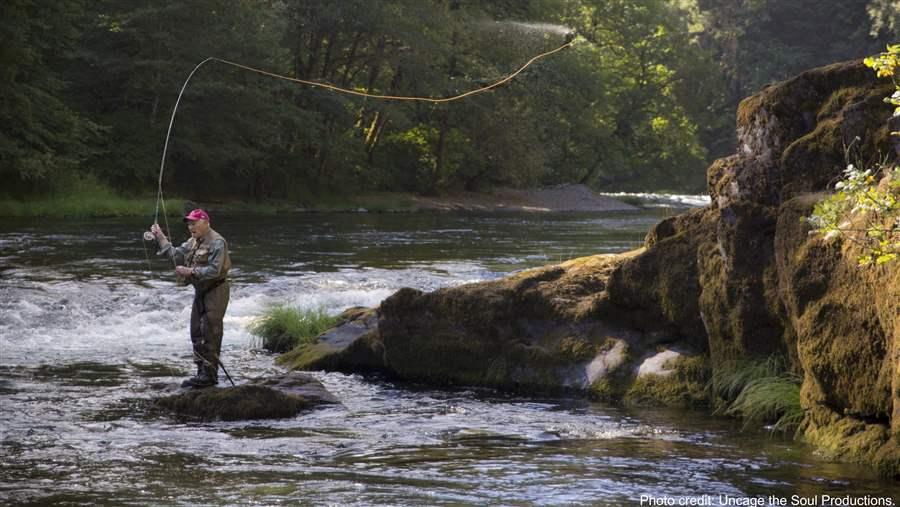Community Interest Drives Conservation

A fisherman at the North Umpqua River in Oregon.
The last few months have seen several bills introduced and a Senate hearing, seeking to move forward on permanent land protections:
- On Aug. 5, California Democrats Barbara Boxer and Dianne Feinstein introduced legislation in the Senate that would add more than 6,200 acres to the California Coastal National Monument. Representatives Lois Capps, Anna Eshoo, and Jared Huffman, also California Democrats, followed suit in the House of Representatives in September. The legislation would safeguard five areas that offer stunning views of the Pacific Ocean and conserve important cultural sites and critical animal habitat. Expansion of the monument would also be expected to boost tourism along the California Coast. The Senate Energy and Natural Resources Subcommittee on Public Lands, Forests, and Mining held a hearing on the legislation in October.
- The California Desert Conservation and Recreation Act, a measure authored by Sens. Feinstein and Boxer, was also on the docket at the October hearing. This bill would increase protections for approximately 1.6 million acres of desert landscapes across Southern California by creating or expanding 11 wilderness areas, designating two new national monuments—the Mojave Trails and the Sand to Snow—and enlarging the Mojave National Preserve and the Joshua Tree and Death Valley national parks. It also would safeguard key waterways as wild and scenic rivers, preserve areas for off-road-vehicle use, and set aside regions for the potential development of renewable energy.
- The Frank Moore Wild Steelhead Sanctuary Designation Act, sponsored by Senators Ron Wyden and Jeff Merkley, Oregon Democrats, was also heard by the subcommittee in October. This measure would preserve over 100,000 acres in Oregon containing some of the best wild steelhead spawning spots in the Pacific Northwest and is named to honor Moore, a veteran and legendary steward of the North Umpqua River. The bill would safeguard drinking water for local communities and protect significant cultural and wildlife resources.
- In October, Representative Judy Chu (D-CA) introduced the San Gabriel Mountains Foothills and Rivers Protection Act to increase access to and improve management of the San Gabriel Mountains National Monument and expand the monument by approximately 100,000 acres.
- In early November, Representative Raul Grijalva (D-AZ) introduced the Greater Grand Canyon Heritage National Monument Act to designate 1.7 million acres in the Grand Canyon region as a national monument and to permanently protect the landscape from new uranium mining.
Before Congress leaves for the December holidays, Pew would like to see more hearings and markups on these and other public lands measures to bring these important initiatives closer to passage. However, if Congress is unable to advance the legislation, the president has the authority under the Antiquities Act of 1906 to take action to safeguard these lands.
The administration’s willingness to step in was evident last month, when it hosted a public meeting near Palm Springs, California, to hear comments about potential monument designation for portions of the land that Sen. Feinstein’s California Desert Conservation and Recreation Act would conserve. More than 900 people heard from Michael Connor, deputy interior secretary, and Robert Bonnie, undersecretary of agriculture, and many voiced their opinions. The majority of attendee comments supported a monument proclamation.
Pew will continue to work diligently with members of Congress and local partners to move balanced, reasonable legislation forward to permanently protect our public lands, recreation, and cultural values and to help sustain our local economies.











